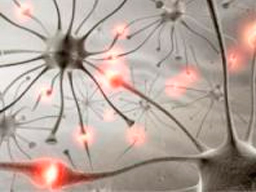

Is Parkinson’s disease hereditary?
Genetic forms of Parkinson’s disease occur in a very low percent of people that develop the disease. Most cases are “idiopathic” which means that it starts spontaneously or without knowing the cause. However, there is now a growing body of evidence suggesting that exposure to pesticides, herbicides, and other forms of industrial toxins can all contribute to the development of the disease.
Is sitting out in the sun a substitute for bright light therapy?
While getting the right amount of light during the day is important to all people, including Parkinson’s disease patients, it is not a substitute for the application of bright light at the strategic time during the light / dark cycle. Because the visual system is impaired in this disorder it needs a rather abrupt stimulus at the right time of day to treat the disorder effectively. In addition environmental conditions do not always guarantee that the sun will provide the right amount of light at the right time to aid in treating the condition properly. As a minimum, you would need to get as much sunlight during normal daylight hours but this would also be supplemented with bright light therapy at the time your doctor (who should be adequately versed in principles of clinical chronobiology), prescribes.

Can I use the light with cataracts or glaucoma?
In many cases it is O.K. to use phototherapy if you have some eye conditions such as cataract or glaucoma. However, it is important that you have your eyes checked by a qualified ophthalmologist to determine if there are any special conditions regarding light use. He will take into account the drugs you are taking as well as whether any of the drugs you are on can produce photosensitivity and thereby cause damage to the retina when combined with the light. Your doctor will know which drugs do this and will advise you accordingly. You should have your eyes examined annually to ensure that your sight remains in good condition.
Can I use the light at a different time to that which was prescribed?
The use of light to effect a change in function of the circadian system must be applied at a very specific time during the light / dark cycle. Our recent work has clearly shown that the nerve cells of the nigro-striatal dopamine system are similar to those in the retina and the pineal gland. That is, they function differently during the day than they do during the night. This principle has been confirmed by other researchers and periodic changes in Parkinson’s patients have been observed since James Parkinson first described Parkinson’s disease in his book “An essay on the Shaking Palsy”, published in 1817. Although we have found that most patients respond best to the application of light in the evening, some patients do require it at different times of day. This, however, should be carefully and systematically determined by someone who is trained in the areas of managing Parkinson’s disease and circadian function.
Should I take my medication at night?
 In the sample of patients treated at the Bronowski clinic less than 10% were actually prescribed dopamine replacement at night, prior to attending the clinic. While such a practice has not been based on sound scientific evidence concerning the biology of this system, it probably emerged because the goal of dopamine replacement has been to gradually replace dopamine evenly over a 24 hour period to achieve normal levels of dopamine in the depleted system. While our work agrees with the concept that sudden large doses of drug can have an adverse effect upon normal physiological function, we cannot lose sight of the fact that these cells work in unison with the time of day. At night the activity of dopamine cells generally decreases and it is contrary to their natural function to artificially increase these levels during the dark phase. There is evidence within the biomedical literature suggesting that in doing so, we are interrupting the day / night cycle and this would explain why sleep and daytime fatigue are a problem in Parkinson’s disease. By increasing dopamine at night the levels of melatonin are being suppressed thereby compounding the problem. In any homeostatic system it is important to keep things in balance and the dopamine system is no exception. Maintaining a functional balance between dopamine and melatonin is at the core of the therapeutic benefit that we are able to achieve with the photopharmacological approach.
In the sample of patients treated at the Bronowski clinic less than 10% were actually prescribed dopamine replacement at night, prior to attending the clinic. While such a practice has not been based on sound scientific evidence concerning the biology of this system, it probably emerged because the goal of dopamine replacement has been to gradually replace dopamine evenly over a 24 hour period to achieve normal levels of dopamine in the depleted system. While our work agrees with the concept that sudden large doses of drug can have an adverse effect upon normal physiological function, we cannot lose sight of the fact that these cells work in unison with the time of day. At night the activity of dopamine cells generally decreases and it is contrary to their natural function to artificially increase these levels during the dark phase. There is evidence within the biomedical literature suggesting that in doing so, we are interrupting the day / night cycle and this would explain why sleep and daytime fatigue are a problem in Parkinson’s disease. By increasing dopamine at night the levels of melatonin are being suppressed thereby compounding the problem. In any homeostatic system it is important to keep things in balance and the dopamine system is no exception. Maintaining a functional balance between dopamine and melatonin is at the core of the therapeutic benefit that we are able to achieve with the photopharmacological approach.
Should I exercise?
Exercise is very good for Parkinson’s disease patients. In addition to the general advantages of physical exercise we find that people who are informed that they have developed a disorder that impairs their ability to move migrate more quickly toward inactivity because they, in fact, have been informed that they are so impaired. One of the best ways to overcome psychological defeat is not to succumb to it and keeping active by exercising is one way of maintaining a good quality of life.

When I get anxious my tremor gets worse. Should I take another pill to compensate?
If you feel that your tremor is troublesome the best resolution is to check with your doctor to determine if your medication is maintained at an adequate level. However, one has to be careful not to overdose in response to an occasional, acute episode of tremor which may be brought on by stress, illness or some other extraneous factor. Given that the thrust of drug intervention now maintains that “slow and steady wins the race”, the best approach is to weigh out the cost in the longer term against the relief of a minor episode of symptom flair up. The best resolution is to work with your doctor to achieve an optimal balance.
How do I know if I’m taking too much medication?
 There are distinct symptoms characterizing dopamine overdose in Parkinson’s disease which are listed in the clinic section and include involuntary movement, hallucination, psychosis, Dopamine Dysregulation Syndrome (DDS), etc. It has become common practice to add dopamine replacement in ever increasing doses to achieve a therapeutic response with little regard for the possibility that there is an upper limit to the amount of dopamine that a system can take.
There are distinct symptoms characterizing dopamine overdose in Parkinson’s disease which are listed in the clinic section and include involuntary movement, hallucination, psychosis, Dopamine Dysregulation Syndrome (DDS), etc. It has become common practice to add dopamine replacement in ever increasing doses to achieve a therapeutic response with little regard for the possibility that there is an upper limit to the amount of dopamine that a system can take.
The need for deep brain stimulation (DBS) and the development of end stage incapacitation can be attributed, at least in part, to the prolonged use of high doses of dopamine replacement. This is why the photopharmacological approach has proven so useful in treating Parkinson’s disease as it enhances the therapeutic response to low dose dopamine replacement.
Does weather make a difference?
We have observed changes in the severity of symptoms and the response to medication which occur with changes in the weather. Some patients have demonstrated deterioration in condition during dark, overcast weather in climates that are usually sunny and subtropical. At the conclusion of these 2 to 3 week periods (termed an Infradian rhythm), the patient then returns to normal. There is evidence from work in other species that similar periods in subtropical areas are accompanied by increased formation of pathological features that closely resemble the Lewy body produced in Parkinson’s disease, and these dissipate with the return to favorable weather. While the importance of Infradian rhythms in the therapeutic response and in the disease itself are yet to be determined, patients should be cautious about increasing their dose of dopamine replacement before they establish that the decreased efficacy they are experiencing is just a temporary anomaly. This will help to avoid the development of overdosing phenomena.

What is the relationship between the loss of dopamine in the substantia nigra and the severity of Parkinson’s disease?
In the early years of dopamine theory it was generally accepted that the more severe the cell loss, the more severe the dopamine deficiency and the more severe the Parkinson’s disease. However, this position has been very gradually eroded by the ongoing demonstration that this relationship is a poor one (See our publications, 2008). In fact, recent work has demonstrated that Parkinson’s disease can develop with only 30% loss of dopamine (Annals of Neurology, 67(6) 715-725, 2010) suggesting that it is not only the level of dopamine that is important. This has important implications for treating the disease and is consistent with our approach using coordinated drug and light treatment.
Why has the development of stem cell treatments for Parkinson’s disease been delayed?
 While, from a theoretical position, the implementation of stem cells has certain attractive features for restoring brain function, at our current level of understanding it is little more than placing a deposit of dopamine directly into the brain. Problems such as reestablishing the millions of connections between stem cells and those with which they connect is a limiting factor as to how well they would function to reverse Parkinsonian symptoms. Furthermore, if incorrect connections are made as the implanted stem cells begin to grow, it would be impossible to remove the system from the brain in patients that did not react favorably to them. Placing new cells in the brain and returning their normal functional capacity within the complex matrix of the brain is the challenge which has not yet been met.
While, from a theoretical position, the implementation of stem cells has certain attractive features for restoring brain function, at our current level of understanding it is little more than placing a deposit of dopamine directly into the brain. Problems such as reestablishing the millions of connections between stem cells and those with which they connect is a limiting factor as to how well they would function to reverse Parkinsonian symptoms. Furthermore, if incorrect connections are made as the implanted stem cells begin to grow, it would be impossible to remove the system from the brain in patients that did not react favorably to them. Placing new cells in the brain and returning their normal functional capacity within the complex matrix of the brain is the challenge which has not yet been met.
What hope do neuroprotective drugs hold for Parkinson’s disease in the future?
The theory underlying the development of neuroprotective drugs for Parkinson’s disease emerges from the position that the disease is caused by oxidative stress and that drugs can be used to slow or stop the process. However, to date there have been many limitations on the development of such drugs. The first of these are the time limitations placed on studies used to determine which drugs might work in this capacity. Given the very slow nature of this disease it is difficult to approximate the impact of possible drugs on the insidious process that occurs over a 2 to 3 decade period. To date, the most promising studies have reported only very modest results. Additional problems arise by the common practice of confusing symptomatic improvement with the ability of a treatment to prevent symptomatic progression and this has overshadowed any meaningful interpretation of results. Our work with photopharmacological intervention has maintained patients on drug and light regimens for up to ten years and has not only prevented patients from worsening but patients appear better than when they commenced the program. Our work suggests that the visual system plays a major role in this regard.
Am I eligible for Deep Brain Stimulation, and if so, what are the positives and negatives to having this surgery?
Deep Brain Stimulation (DBS) is indicated to assist the patient in becoming responsive to dopamine replacement after they have lost this response with prolonged treatment, or have developed severe side effects.
DBS is not curative and was not developed for treating the primary motor and non-motor symptoms of the disease and it is too early to tell if it has any impact on disease progression. Neither has it been conclusively demonstrated that it is curative or neuroprotective. It mainly provides a means by which the effective dose of dopamine replacement can be lowered. Notwithstanding the inherent dangers of intracranial surgery, the side effects of DBS include the possibility of developing impaired speech, deterioration of balance and an increase in depression. It is our belief that, in 2018 and beyond, treatments for disabling diseases should be moving more toward achieving improved therapeutic efficacy by being less invasive. On this note, it is interesting to also note that the electrodes used in DBS are implanted into a brain site called the sub-thalamic nucleus (STN) which is connected to the retina by the accessory optic tract. We hypothesize that light therapy could well be changing deep brain function by this connection between the retina and the STN. Our current work continues to explore this theme.
I have had the disease for many years, is it too late to start the light treatment?
In our soon to be published study on more than one hundred neurological patients, it appears that the length of time that a patient has the disease or the age of the patient has little to do with how well the patient will respond to photopharmacological intervention. Excessive doses of dopamine replacement and failure to follow the prescribed program have a much more detrimental effect on the outcome of drug and light therapy than age or duration of illness.
Will I need to quit my job?
Not necessarily, that depends on several factors such as the severity of your disease, how much medication you are on and your ability to cope with stressful situations at work. If you are on large doses of drug and not responding well to your current treatment, or if you are stressed at work and suffering from anxiety which worsens your symptoms, then it may be time to consider a rest from work or retirement to develop a change in lifestyle that will help you cope. Having said that, we have seen many patients that have improved so much from a strategic drug and light application that they were able to return to work on a part time and even full time basis.